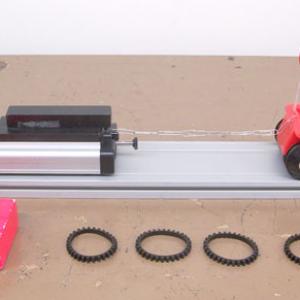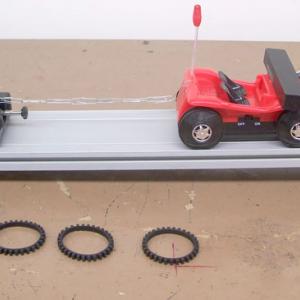College of Liberal Arts & Sciences
1I10.42 - Friction and Trains
Connect the Tumble Buggy and the Pasco cart together and set the friction adjustment so that the Buggy will spin but not be able to pull the cart. Then during the demonstration you can reset the friction so that it is less and the Buggy (train) is able to move.
Place the block under one end of the track and adjust the incline so that the system just moves down the incline as the Buggy is trying to pull it up the incline. Take a weight off of the cart and place it across the front of the Buggy and observe that now the Buggy and cart system is able to move up the incline.
-
James Lincoln, "Way Too Many Demos with the Constant Velocity Car", TPT, Vol. 60, #8, Nov. 2022, p. 710.
Disclaimer: These demonstrations are provided only for illustrative use by persons affiliated with The University of Iowa and only under the direction of a trained instructor or physicist. The University of Iowa is not responsible for demonstrations performed by those using their own equipment or who choose to use this reference material for their own purpose. The demonstrations included here are within the public domain and can be found in materials contained in libraries, bookstores, and through electronic sources. Performing all or any portion of any of these demonstrations, with or without revisions not depicted here entails inherent risks. These risks include, without limitation, bodily injury (and possibly death), including risks to health that may be temporary or permanent and that may exacerbate a pre-existing medical condition; and property loss or damage. Anyone performing any part of these demonstrations, even with revisions, knowingly and voluntarily assumes all risks associated with them.


